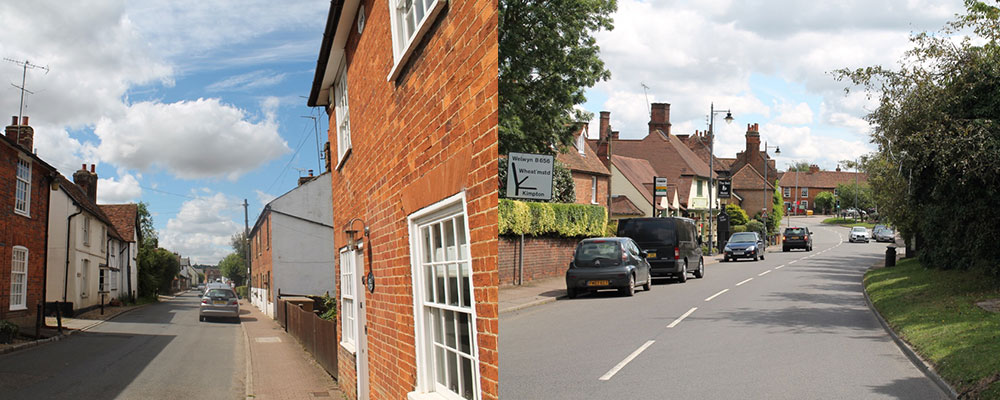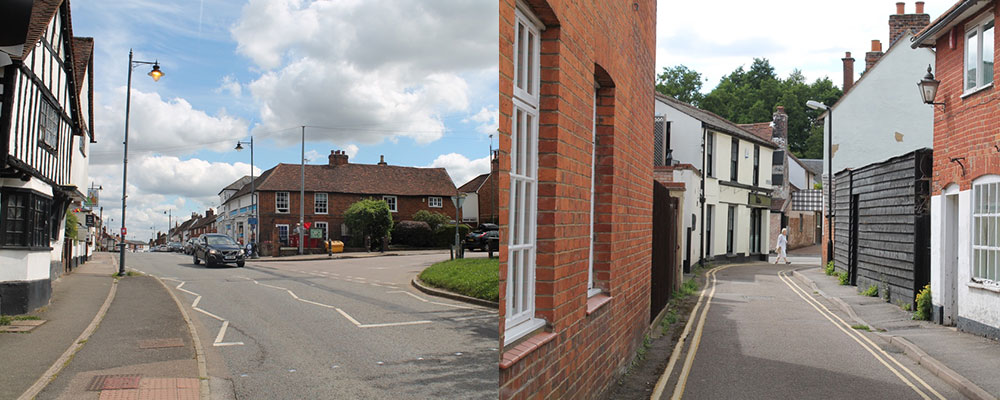The Roadside Village
In 1946, Thomas Sharp published a short book on The Anatomy of the Village. Arguing that the English village possesses “a remarkable beauty…a charm and a pleasantness and a whole character”, Sharp suggested a comprehensive approach to meet the pressures of postwar housing might seek to develop our existing villages, or build anew from scratch. This should start with a study of their physical make up, as this would prove profitable in future designing.
Writing in a style described by the old BBC magazine, The Listener, as having “a balanced clarity beyond all praise” whilst offering “a contribution to planning literature quite out of proportion to its size, objectifying in a narrow compass an idea of incalculable importance”, Sharp explored the siting, shape and character of several exemplary villages, from Castle Acre, Norfolk, to Polperro, Cornwall.
In terms of actual physical design, Sharp was careful to state that one cannot simply imitate the past, for example by designing twee cottages and covering them in ivy, and hope to design successfully for the future. We must, of course, learn from history, and experience, but unless we bring a contemporary approach to the design and development of these villages “they would…be doomed to failure from the beginning”.
Sharp suggested there are several categories of village in England, the roadside, squared, seaside and planned, which we explore in turn.
The Roadside Village
The roadside village consists of a string of buildings, perhaps houses, shops, inns and so on, standing next to each other along a road. He tells us that within the curious charm of the English roadside village lie three important lessons for the planner. First, the village buildings never stand aloof alongside a straight road, but instead manage to contain the crooked road. Whether the crookedness is a light kink or a full turn, the sense offered those arriving into the village is that they have come to a place, not simply an incident to pass by on the roadside. (To visualise this distinction, consider the gulf between A1(M) roadside services in the twenty first century and what they used to be. Services that we pass by as “merely an incident on the roadside”, that we mostly try to avoid are the descendants of old staging posts: those villages and little towns dotted along the Great North Road, for example, spaced as far as a horse could pull a carriage).
Lesson two, for the planner who grasps lesson one, lies in the placement of the main buildings: “at the turn of the road; or maybe right at the head of the village street, dominating it. A manor house, a group of almshouses, a tithe barn, a mill, an inn, a couple of shops, may by accident or design be so situated as to give an emphasis, a ‘punctuation’, to one or more points in the plan.” In the twenty first century these may be the pub, the local café, restaurant or village shop, if they remain, and they will definitely still be the church or the manor.
The final lesson comes when drawing the first two together, and underlies everything else: “informality is the essential quality” of the roadside village. The irregular and informal relationship between the buildings of the village, their lack of uniformity, their variation in height – often one to three storeys squat comfortably next to each other – and their individual simplicity: these come together in England’s roadside villages.


